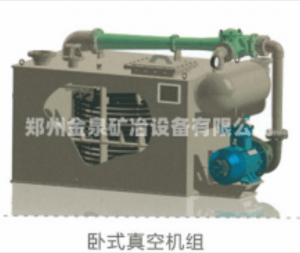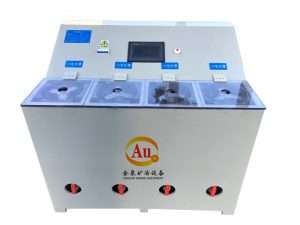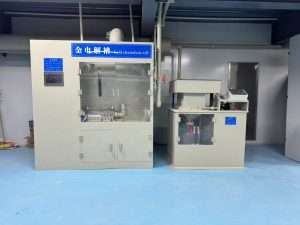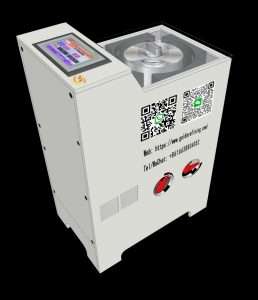Call us now:

Vacuum unit equipment
I. Equipment Features The vacuum unit is composed of a series of units including anti-corrosion PP water tank, buffer tank, RPP water jet pump, check valve, steam-water jet pump, and
When platinum group metal concentrates are separated and refined, many of them are produced as AgCl residues. Heavy non-ferrous metal smelters of copper, lead electrolytic anode mud processing, more complex output of crude silver. Depending on the nature and composition of the raw materials can be refined by chemical and electrolytic methods, the former is suitable for small-scale processing of impure silver chloride and other compounds, the latter is suitable for a large number of crude silver refining.
I. Chemical method: direct reduction of AgCl:
Widely used is the hydrazine hydrate reduction method, the advantages of strong reduction, fast reaction, without the introduction of new impurities. When the raw material contains low Ag or high impurities such as SiO2, Cu, Ni, Cd, etc., must first be dissolved with HNO3: AgCl + HNO3 = AgNO3 + HCl; filtered to separate the SiO2 residue, the solution boiled to add HCl or NaCl to re-sink AgCl, and then filtered to separate the base metal impurities. Impure silver chloride first slurry with water and then add ammonia to adjust the solution pH to 10-11, AgCl into soluble ammonia complex: AgCl + 2NH3.H2O = Ag (NH3) 2Cl + 2H2O; where the base metal impurities hydrolysis precipitation, the filtered silver solution is heated to about 50 ℃, stirring under the mAg:mN2H4.H2O = 1: (0.3-0.4 ) ratio slowly add the concentration of 40-80% hydrazine hydrate, about 30min reduction of off-white sea line brocade silver, the chemical reaction equation is: 4Ag(NH3)2Cl + N2H4.H2O + 3H2O = 4Ag + N2 + 4NH4Cl + 4NH3.H2O; reduction rate > 99%, silver purity > 99%.
Second, electrolytic refining: treatment of copper, lead anode sludge obtained Ag-Au (containing Ag>99%), gold chloride sludge dissolution obtained Ag 70-75% of the combined gold, silver containing secondary resources extracted from the crude silver, etc., can be refined by electrolytic method. First need to smelt and burn the crude silver into silver anode plate. Containing copper, selenium, tellurium and other impurities more refined silver, after melting first add sodium carbonate melt and drum air in the melt surface oxidation blowing, so that copper, tellurium and other impurity elements slagging, separation of slag after the rough silver cast as anode plate. General silver anode contains Ag>75%, Au<20% and a small amount of copper, bismuth, etc.. In the circulating silver nitrate solution electrolysis, the electrolyte contains Ag60-150g/L. In order to prevent bismuth and other base metal hydrolysis contamination of silver powder, the electrolyte should contain free HNO3-18g/L, but the concentration of nitric acid should not be high, otherwise the silver powder precipitated from the cathode will be redissolved by nitric acid.

I. Equipment Features The vacuum unit is composed of a series of units including anti-corrosion PP water tank, buffer tank, RPP water jet pump, check valve, steam-water jet pump, and

Jinquan Electrochemical Deposition Equipment The electrochemical deposition system has revolutionized traditional metallurgical processes through dynamic flow field control technology and is widely used in

Intelligent gold electrolysis equipment combines automatic control, intelligent monitoring and efficient electrolysis technology. It can process raw gold materials with a purity of more than

Jinquan Electrolysis - Cyclone Electrowinning Equipment Cyclone electrowinning equipment is widely used in gold plating solution, gold stripping solution, gold ore heap leaching, spraying solution